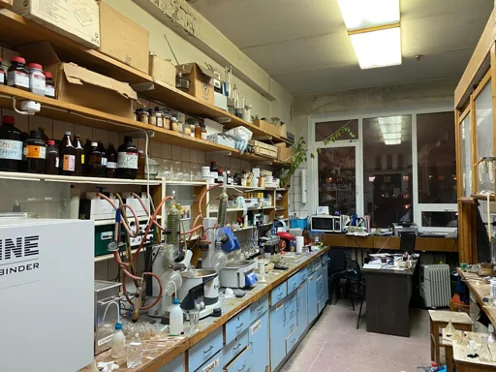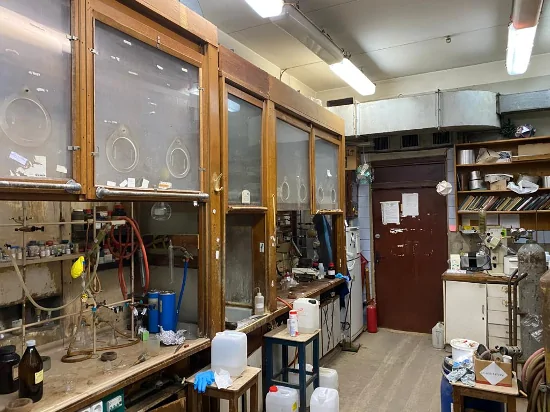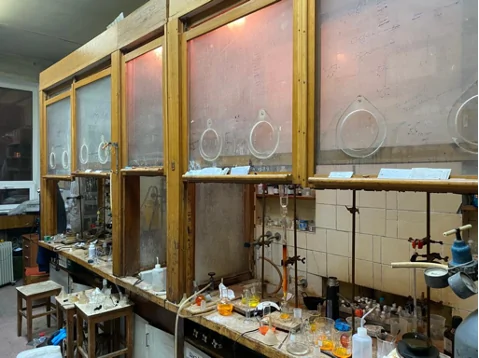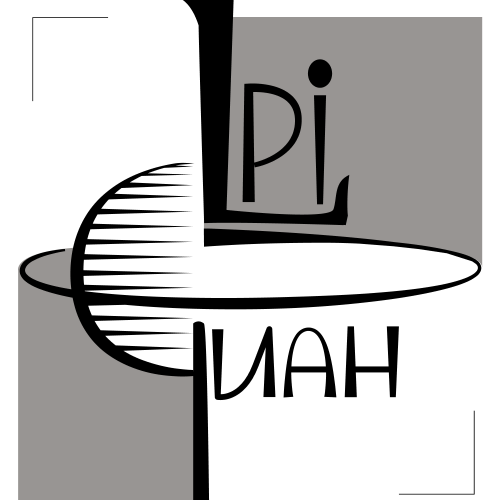Laboratory of Polyserazyrogenous Heterocycles
Publications
263
Citations
3 738
h-index
30
Authorization required.
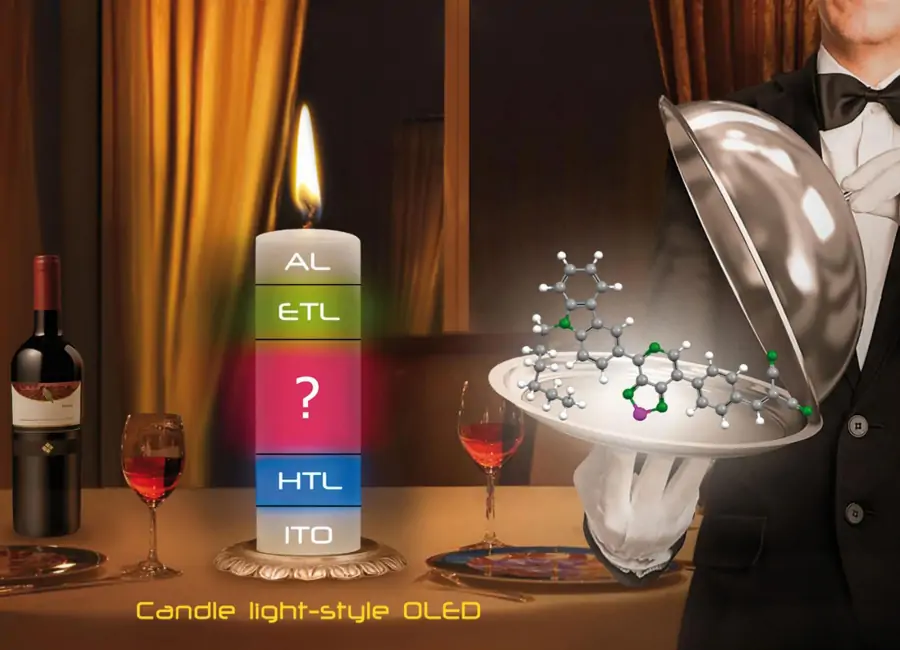
Synthesis and chemical properties of new polyser- and sulfur-nitrogenous heterocyclic compounds, which can be aromatic and antiaromatic, as well as systems with extended conjugation.
- Subtle organic synthesis
- NMR spectroscopy
- Spectrophotometry
- X-ray diffraction analysis
Oleg Rakitin
Head of Laboratory
Lidiya Konstantinova
Leading researcher
Vladimir Ogurtsov
Senior Researcher
Ekaterina Knyazeva
Senior Researcher
Maksim Mihaylov
Lead Engineer
Oleg Bolshakov
Lead Engineer

Nikita Gudim
Researcher
Natalyya Obruchnikova
Junior researcher
Svetlana Vorontsova
Junior researcher
Mikhail Tolmachev
PhD student
Olyga Ustimenko
Student
German Chhetiani
Student
Aleksandr Postnikov
Student
Klim Pogoryanskiy
Student
Artem Chadin
Student
Timofey Kudryashev
Student
Daria Alekhina
Student
Karim Gaisin
Student

Timofey Kudryashev
Student
Egor Kotov
Student
Research directions
Production of active components of organic light-emitting diodes with candle light characteristics (Candle Light-Style Organic Light Emitting Diode)
+
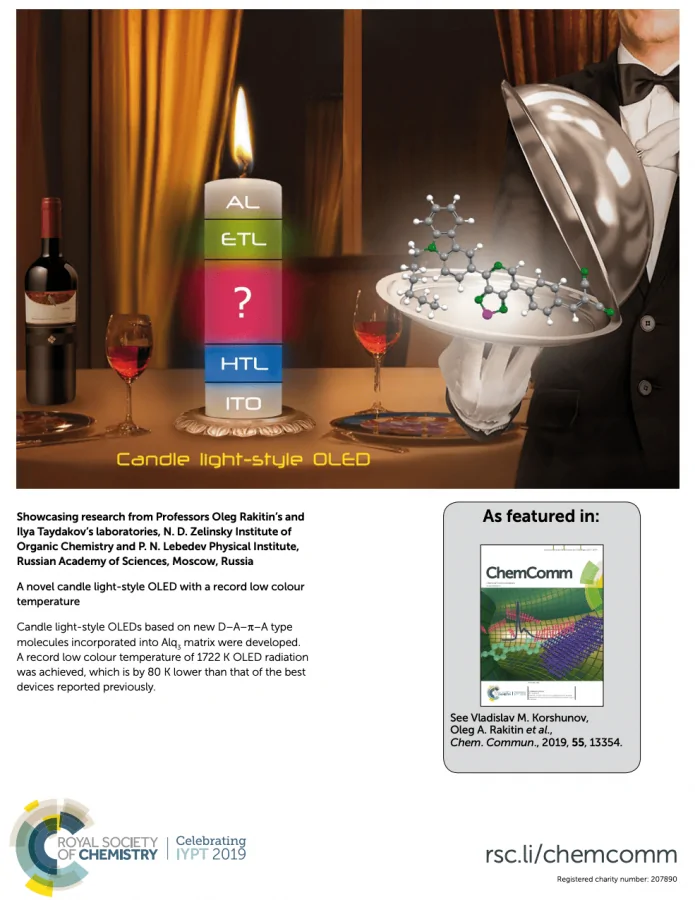
Search for optimal structures and targeted synthesis of dyes based on chalcogenazole containing heterocyls to create LEDs that are physiologically safe. Such LEDs, thanks to an innovative design and a combination of new specially synthesized phosphors, have practically no harmful radiation in the blue region of the spectrum, and the color characteristics of their radiation are similar to the light characteristics of the flame of ordinary candles. The advantage of such devices is also the absence of rare and noble metals in their composition, such as iridium and platinum (the basis of modern industrial phosphors for OLED devices), and the relative simplicity of the design as a whole.
New approaches to polyserase-containing heterocycles
+

New approaches to the synthesis of polyserase-containing heterocycles containing several sulfur atoms and a nitrogen atom based on the reaction of sulfur monochloride complexes and nitrogen-containing bases are being investigated. At the moment, a number of new heterocyclic systems have been obtained, including 1,2- and 1,4-thiazines, thiophenes, monocyclic and condensed 1,2-dithiols and 1,2,3-dithiazoles, 1,2,3,4,5-pentathiepines, 1,2,3,4,5,6,7-heptathiocanes, etc. The polyserase-containing heterocyclic compounds synthesized by us (1,2-dithiols, 1,2,3,4,5-pentathiepines and 1,2,3-dithiazoles) show high anticancer, antimicrobial and antifungal activities.Synthesized 1,2,3,4,5-pentathiepines have been studied as a cathode material for batteries; condensed 1,4-dithiines have been proposed as multi-purpose components for photoreceptors.
New series of organic sensitizers based on chalcogenase-containing heterocycles
+
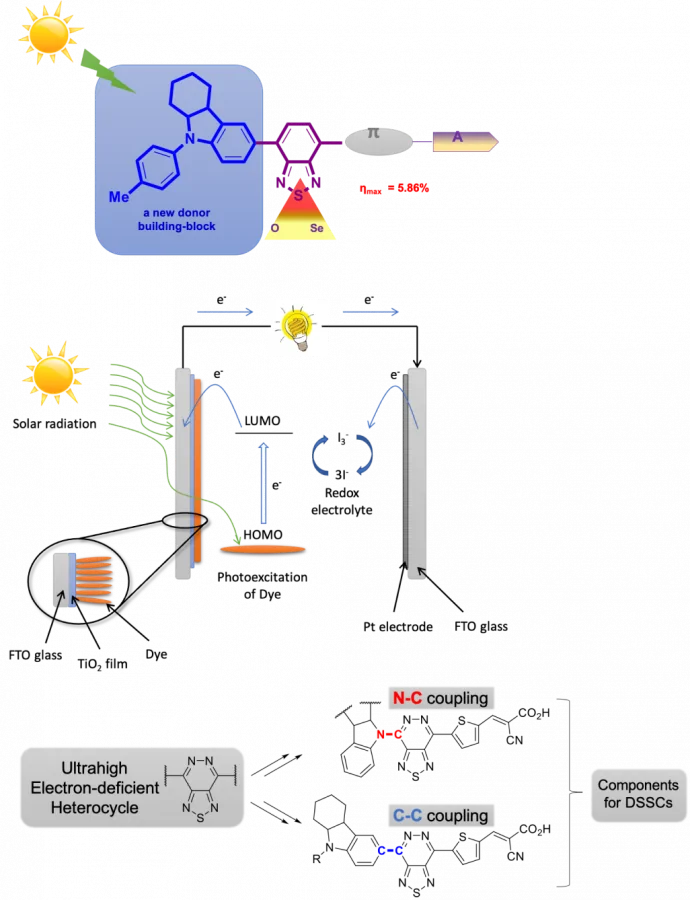
The search for new effective organic components for Dye-sensitized solar cells (DSSCs) based on the D-A-π-A strategy, which consists in the introduction of an additional acceptor group (A) between the donor (D) and the π bridge, in the role of which chalcogenase-containing heterocycles act. Development of organic sensitizers of a more complex design to create more effective DSSCs.
The general mechanism of action of polysulfide heterocycles against feline immunodeficiency virus
+
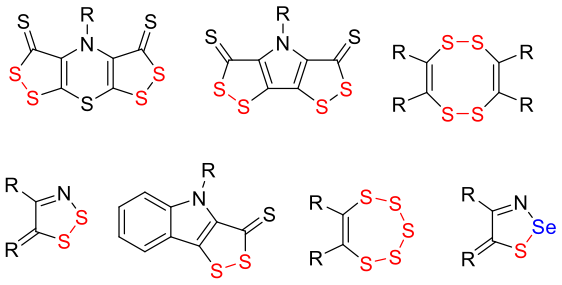
Methods for the synthesis of polysulfide heterocycles are being developed, which have a common mechanism of action and high selectivity against the feline immunodeficiency virus, which is the closest analogue of the human immunodeficiency virus. It has already been established that compounds of different heterocyclic structures: bis(dithiolo)thiazines, bis(dithiolo)pyrroles, tetrathiocines, dithiazoles, dithioloindoles, pentathiepines and thiaselenazoles are promising antispid compounds, which is of significant value for the development of not only chemical, but also biological sciences.
Publications and patents
Found
Nothing found, try to update filter.
Чмовж Т.Н., Князева Е.А., Ракитин О.А.
RU2668978C1,
2018
В. Н. Коршунов, Т. Н. Чмовж, Е. А. Князева, И. В. Тайдаков, Л. В. Михальченко, Е. А. Вараксина, Р. Р. Сайфутяров, И. Х. Аветисов, О. А. Ракитин
RU2729424C1,
2020
2022
—
2023
| Ракитин Олег Алексеевич
Lab address
ИОХ РАН, 311 ГК, 505 ЛК, 506 ЛК, 509 ЛК, 201 КМУ
Authorization required.




